
JOURNAL OF INCLUSION PHENOMENA AND MACROCYCLIC CHEMISTRY
Scope & Guideline
Connecting Chemistry, Physics, and Food Science
Introduction
Aims and Scopes
- Macrocyclic Chemistry:
The journal emphasizes the synthesis, characterization, and application of macrocyclic compounds, including cyclodextrins, calixarenes, and cucurbiturils, which are pivotal in various chemical and biological processes. - Host-Guest Interactions:
Research articles frequently explore the nature of host-guest interactions, focusing on the thermodynamics, kinetics, and structural properties of inclusion complexes formed between macrocyclic hosts and diverse guest molecules. - Supramolecular Chemistry:
The journal features studies on supramolecular assemblies, highlighting strategies for the design and application of supramolecular systems in sensing, drug delivery, and environmental remediation. - Computational Studies:
Many papers incorporate computational methods, such as DFT and molecular dynamics simulations, to predict binding energies, analyze structural properties, and understand the behavior of macrocyclic complexes at the molecular level. - Applications in Drug Delivery and Sensing:
The journal actively publishes research on the practical applications of macrocyclic compounds, particularly in drug delivery systems, chemosensors, and environmental applications, showcasing the relevance of inclusion chemistry in real-world scenarios.
Trending and Emerging
- Nanotechnology and Drug Delivery Systems:
There has been a significant increase in research focused on the development of nanostructured drug delivery systems utilizing macrocyclic compounds, highlighting their potential in enhancing bioavailability and therapeutic efficacy. - Environmental Applications:
Emerging studies explore the use of macrocyclic compounds in environmental remediation, particularly in the removal of pollutants and heavy metals, indicating a growing interest in sustainable chemistry. - Smart and Responsive Materials:
Research on stimuli-responsive and smart materials that incorporate macrocyclic compounds is on the rise, reflecting advancements in materials science and the demand for innovative applications in sensors and actuators. - Integration of Computational Chemistry:
The integration of computational techniques with experimental studies has gained momentum, allowing for more precise predictions of binding affinities and complex formation, thus enhancing the understanding of host-guest interactions. - Chiral and Asymmetric Synthesis:
There is an increasing focus on the chiral recognition capabilities of macrocyclic compounds and their applications in asymmetric synthesis, reflecting a trend towards developing enantioselective processes in organic chemistry.
Declining or Waning
- Traditional Host-Guest Complexation:
Research focusing solely on traditional host-guest complexation without innovative applications or novel materials has decreased, likely due to a growing emphasis on multifunctional systems and advanced applications. - Basic Structural Studies:
Papers that primarily describe structural studies of macrocyclic compounds without accompanying functional or application-based insights have become less common, as researchers increasingly seek to connect structure with function. - Single-Purpose Applications:
There is a noticeable decline in studies that apply macrocyclic chemistry to singular, niche applications, as the field moves towards interdisciplinary approaches that encompass broader applications in materials science and pharmacology.
Similar Journals
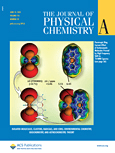
JOURNAL OF PHYSICAL CHEMISTRY A
Connecting researchers to the latest in physical chemistry.Journal of Physical Chemistry A, published by the American Chemical Society, serves as a leading platform for disseminating high-quality research in the fields of physical and theoretical chemistry. With an ISSN of 1089-5639 and E-ISSN of 1520-5215, this journal maintains a rigorous standard, demonstrated by its position in the Q2 category for both physical and theoretical chemistry as well as miscellaneous medicine within its 2023 category quartiles. As part of the greater ACS network, it operates with a solid Scopus rank of 76/189, placing it within the 60th percentile, emphasizing its credibility and impact in the chemistry community. The journal's objective is to enhance the understanding of molecular phenomena through innovative experimental and computational approaches, making it essential reading for researchers, professionals, and students seeking to advance their knowledge and contribute to scientific discussion. With additional open access options, the Journal of Physical Chemistry A continues to foster collaboration and the sharing of ideas in the vibrant scientific landscape of the United States and beyond.
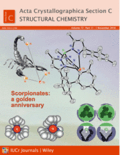
ACTA CRYSTALLOGRAPHICA SECTION C-STRUCTURAL CHEMISTRY
Advancing Knowledge in Crystalline MaterialsACTA CRYSTALLOGRAPHICA SECTION C-STRUCTURAL CHEMISTRY is a respected journal in the fields of condensed matter physics, inorganic chemistry, and materials chemistry, published by the International Union of Crystallography. With an extensive history dating back to its inception in the late 1980s, this journal serves as a significant platform for researchers to disseminate high-quality research on structural chemistry, focusing on the synthesis and characterization of crystalline materials. Despite currently holding a Q4 ranking across multiple academic categories, it remains an essential resource for those engaged in these scientific disciplines, facilitating dialogue and collaboration among experts. The journal's commitment to publishing innovative studies ensures that it continues to contribute to the advancement of knowledge in its field. Although it does not offer Open Access, the journal is dedicated to maintaining rigorous peer-review standards, making it a reliable source for scholars and practitioners alike. Located in the United States, ACTA CRYSTALLOGRAPHICA SECTION C is a pivotal part of the global crystallography community.
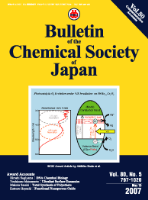
BULLETIN OF THE CHEMICAL SOCIETY OF JAPAN
Fostering Excellence: Where Chemistry Meets KnowledgeBULLETIN OF THE CHEMICAL SOCIETY OF JAPAN, published by the esteemed Chemical Society of Japan, serves as a pivotal platform for the dissemination of cutting-edge research in the multifaceted field of chemistry. With an ISSN of 0009-2673 and an E-ISSN of 1348-0634, this journal has been integral in fostering the growth of chemical sciences globally since its inception in 1965. The journal holds an impressive Q2 ranking in the Chemistry (miscellaneous) category, indicating its relevance and influence within the academic community, as reflected by its Scopus rank of #104/408, placing it in the 74th percentile. Although it is not an open-access journal, its rich content, which spans a wide range of topics in general chemistry, remains highly valued by researchers, professionals, and students alike, affirming its crucial role in advancing both theoretical knowledge and practical applications in chemistry. As it converges towards 2024, the bulletin continues to uphold its commitment to excellence in scientific communication and research dissemination in Japan and beyond.

Computational and Theoretical Chemistry
Transforming Ideas into Computational RealitiesComputational and Theoretical Chemistry, published by ELSEVIER, stands at the forefront of interdisciplinary research in the realms of computational chemistry, theoretical physics, and biochemistry. With its ISSN 2210-271X and E-ISSN 1872-7999, the journal has established a significant presence in the academic community since its inception. Covering innovative computational methodologies and theoretical advancements, it addresses critical issues in condensed matter physics and molecular biochemistry, providing a rich resource for scholars and industry professionals alike. The journal enjoys a respectable impact factor and ranks notably in several Scopus categories, making it a vital platform for disseminating high-quality research. It adopts an open-access model, facilitating wider readership and engagement, which is essential for fostering collaborative innovations in the scientific landscape. As it continues to evolve from 2011 to 2024, Computational and Theoretical Chemistry is committed to advancing knowledge and promoting insightful discussions within the scientific community.

JOURNAL OF MOLECULAR MODELING
Advancing the Frontiers of Molecular ScienceJOURNAL OF MOLECULAR MODELING, published by Springer, is a pivotal resource for researchers and professionals in the fields of chemistry, computer science, and molecular sciences. The journal's ISSN is 1610-2940, with an E-ISSN of 0948-5023, reflecting its commitment to disseminating cutting-edge research from 1996 to 2024. Although the journal does not operate under an Open Access model, it remains an invaluable platform for the publication of innovative studies related to computational methods, theoretical chemistry, and molecular simulations. With a notable categorization across multiple quartiles—including Q4 in Catalysis and Q3 in Computational Theory and Mathematics—the journal holds a distinct rank in Scopus, highlighting its influence and contribution to the discipline. The importance of this journal lies in its ability to bridge the gap between theoretical understanding and practical applications, making it essential reading for students and scholars seeking to advance their knowledge and research in molecular modeling.

RUSSIAN JOURNAL OF INORGANIC CHEMISTRY
Championing Excellence in Chemical ResearchThe Russian Journal of Inorganic Chemistry is a distinguished publication that delves into the fundamental and applied aspects of inorganic chemistry. Published by MAIK Nauka/Interperiodica/Springer, this journal has established itself as a vital resource for researchers, professionals, and students alike, contributing significantly to the fields of Inorganic Chemistry, Materials Science, and Physical and Theoretical Chemistry. With an ISSN of 0036-0236 and an E-ISSN of 1531-8613, the journal is indexed for easy access and citation. Though the journal currently operates under a subscription model, its commitment to disseminating high-quality research and fostering scientific discourse remains steadfast. The journal has been maintaining a consistent record since its inception, and its positioning in the Q3 quartile across various chemistry categories in 2023 underscores its relevance in the academic community. As it continues through its converged years from 1996 to 2024, the Russian Journal of Inorganic Chemistry plays a pivotal role in enhancing the understanding and advancement of inorganic chemistry, making it an indispensable tool for anyone engaged in this dynamic field.

Macroheterocycles
Driving Forward the Future of Organic ChemistryMacroheterocycles is a premier academic journal dedicated to the exploration and advancement of Analytical Chemistry and Organic Chemistry, published by the esteemed Ivanovo State University of Chemical Technology. Since its inception in 2008, this open-access journal has focused on providing a platform for innovative research and breakthrough discoveries in the field of heterocyclic compounds. With its current ranking in the Q3 quartile for Analytical Chemistry and Q4 quartile for Organic Chemistry, Macroheterocycles is rapidly establishing itself as a valuable resource for scientists, researchers, and students seeking to enrich their understanding of complex chemical structures and analytical techniques. Its comprehensive publication model ensures that the latest findings are accessible to a global audience, fostering collaboration and discourse in the scientific community. With ongoing contributions aimed at addressing contemporary challenges in chemistry, this journal is poised to make significant impacts in the field while encouraging the dissemination of knowledge within and beyond Russia.
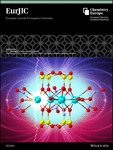
EUROPEAN JOURNAL OF INORGANIC CHEMISTRY
Advancing Inorganic Chemistry through Innovative ResearchThe EUROPEAN JOURNAL OF INORGANIC CHEMISTRY, published by WILEY-V C H VERLAG GMBH, is a premier peer-reviewed journal dedicated to advancing the field of inorganic chemistry. With an ISSN of 1434-1948 and an E-ISSN of 1099-0682, this journal has established itself as a key platform for the dissemination of innovative research, reviews, and features since its inception. As of 2023, it holds a respectable Q2 quartile ranking in the domain of inorganic chemistry, reflecting its influence and contribution to the scientific community—ranking #33 out of 79 in Scopus’ assessment and placing the journal in the 58th percentile. The journal encompasses a wide range of topics within inorganic chemistry, making it a valuable resource for researchers, professionals, and students alike. Although the journal does not currently offer open access, it remains an essential outlet for high-quality, impactful studies in inorganic chemistry, showcasing significant advancements and fostering collaboration among scholars globally.
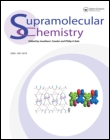
SUPRAMOLECULAR CHEMISTRY
Connecting Ideas, Transforming ChemistrySupramolecular Chemistry, published by Taylor & Francis Ltd, is a pivotal journal in the field of chemistry, showcasing innovative research that transcends traditional molecular boundaries. With an ISSN of 1061-0278 and E-ISSN of 1029-0478, this journal has been a central resource for scholars since its inception in 1992 and is set to continue its impactful contributions through 2024. Ranked in the third quartile (Q3) of miscellaneous chemistry categories and holding a commendable place at #194 out of 408 in the general chemistry rankings according to Scopus, the journal provides a platform for the dissemination of groundbreaking studies that explore the interactions and behavioral patterns of supramolecular systems. Although it does not currently offer open access, its rich content is accessed by a wide audience, fueling advancement and collaboration among researchers, professionals, and students interested in the intricate world of supramolecular science. By regularly publishing peer-reviewed articles, this journal is crucial for anyone seeking to deepen their understanding of complex chemical systems and their applications across diverse fields.
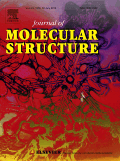
Journal of Molecular Structure
Empowering researchers with cutting-edge molecular research.Journal of Molecular Structure is a premier publication in the field of chemistry, offering a platform for innovative research that spans analytical, inorganic, organic chemistry, and spectroscopy. Published by Elsevier in the Netherlands, this journal is committed to advancing the understanding of molecular architecture and behavior through high-quality, peer-reviewed articles. With its impressive impact factor and a notable Scopus ranking placing it in the top quartiles among its peers, it serves as an essential resource for researchers, professionals, and students alike. The journal's open access options promote the dissemination of knowledge, ensuring that groundbreaking discoveries reach a broad audience. Established in 1967 and projected to continue through 2025, the Journal of Molecular Structure is vital for anyone engaged in the study of molecular interactions and structural analysis.